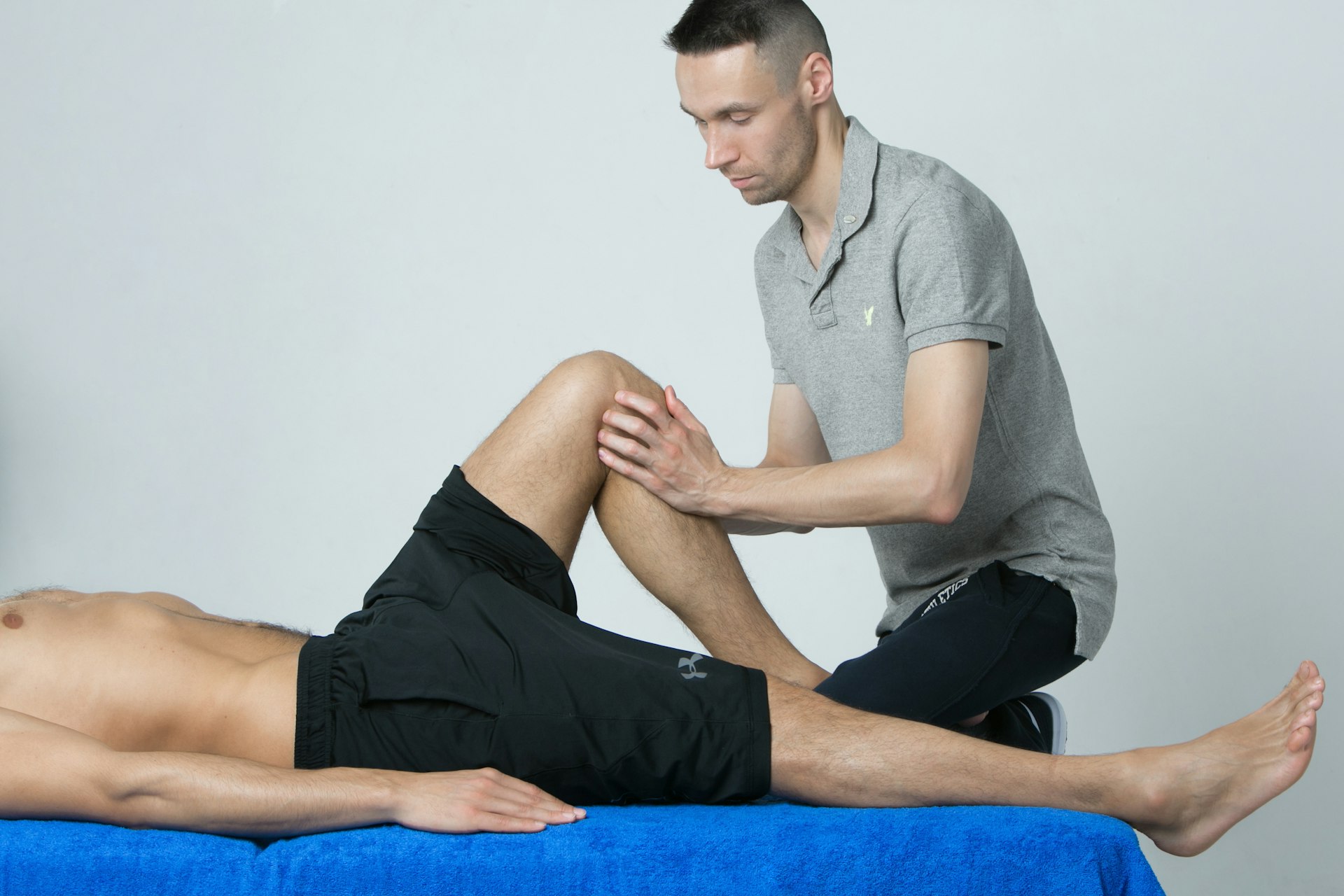Transform Your Life: Actionable Steps to Embrace Fitness-Centered Lifestyle Choices

Photo by Brett Jordan on Unsplash
Introduction
A fitness-centered lifestyle goes beyond short-lived trends or intense workout bursts. It’s about making purposeful, sustainable choices that prioritize movement, healthy eating, and overall well-being. Modern research shows that such choices not only reduce disease risk but also boost mood, cognition, and longevity [1] . This guide will outline practical, actionable steps to help you build a fitness-centered life, address common barriers, and provide alternative approaches for long-term success.
1. Building a Foundation: Set Realistic, Achievable Goals
Success begins with setting goals that are clear and attainable. Rather than aiming for rapid transformations, focus on incremental progress. For example, instead of pledging to run a marathon in six months, commit to a 5K and increase your distance as your fitness improves. This approach helps maintain motivation and reduces the risk of burnout [3] .
To implement this:
- Identify one change you can start today, such as walking for 10 minutes three times a week.
- Write down your goals and revisit them regularly to monitor progress.
- Adjust your goals as you improve, building on small wins for sustained momentum.
If you struggle to meet initial targets, break them down further. For instance, swap one unhealthy snack for a fruit each day or add an extra flight of stairs to your routine. Remember, consistency trumps intensity in the long run.
2. Prioritize Movement: Integrate Activity Throughout Your Day
Regular movement is central to a fitness-centered lifestyle. Research confirms that both structured exercise and informal physical activity contribute to better health outcomes [1] . Sitting for prolonged periods is linked to higher risks of cardiovascular disease and diabetes, but even short activity breaks can offset these effects [1] .
Strategies for staying active include:
- Take standing or walking breaks every hour, especially if you have a desk job.
- Incorporate squats, lunges, or marching in place during TV commercials or work breaks [5] .
- Try informal activities such as dancing, gardening, or playing with children, which add up over time.
If structured exercise feels overwhelming, start with what you enjoy. Even brief walks or light stretching can be the gateway to more regular activity. You may also search for local community centers, gyms, or online platforms offering beginner-friendly virtual classes.
3. Incorporate Strength Training for Lasting Benefits
Strength training isn’t just for athletes. Lifting weights or using resistance bands helps maintain muscle mass, bone density, and metabolic health as you age [1] . National guidelines recommend engaging in muscle-strengthening exercises for all major muscle groups at least twice a week [4] .
Steps to get started:
- Begin with bodyweight exercises like push-ups, squats, and lunges.
- Gradually add resistance with bands or light weights as you grow stronger.
- Track your progress and aim for incremental increases in repetitions or resistance.
Many fitness centers and community programs offer introductory strength training sessions. If you’re new to these exercises, consider working with a certified trainer or searching for reputable instructional videos from organizations such as the American Council on Exercise.
4. Choose Nutrition That Supports Your Goals
Adopting a fitness-centered lifestyle involves making nutrition choices that fuel performance and recovery. Eating more plant-based, nutrient-dense foods can lower disease risk and support longevity [1] . Small changes, such as swapping soda for seltzer or Greek yogurt for sour cream, lead to long-term benefits [3] .
To improve your nutrition:
- Make a list of healthy foods you enjoy and add them to your meals more often.
- Plan your grocery shopping to prioritize whole grains, fruits, vegetables, lean proteins, and healthy fats.
- Prepare meals at home to control portions and ingredients.
- Stay hydrated by choosing water as your primary beverage.
If you want personalized nutrition advice, registered dietitians can provide tailored meal plans. You can find a licensed professional through the Academy of Nutrition and Dietetics by searching for “Find a Nutrition Expert” on their official website.
5. Prioritize Restorative Sleep and Stress Management
Quality sleep and effective stress management are crucial for recovery, motivation, and overall health. Adults should aim for 7-9 hours of sleep each night, ideally on a regular schedule [4] . Poor sleep can impact mood, focus, and physical health, undermining your fitness efforts.
For better sleep and stress control:
- Establish a calming bedtime routine and stick to consistent sleep and wake times.
- Limit screen use before bed and keep your sleep environment dark and quiet.
- Practice relaxation techniques such as deep breathing, meditation, or yoga, which have been shown to lower stress hormones and improve cardiovascular health [1] .
If you struggle with persistent sleep issues or high stress, consult a healthcare provider. Many employers and community health organizations offer wellness resources or can refer you to specialists.

Photo by CHUTTERSNAP on Unsplash
6. Make Habits Sustainable: Overcome Barriers and Stay Motivated
Building new habits is challenging, especially when motivation wanes. The key is to design routines that are enjoyable and realistic. For example, pair a new activity with something you already like, such as listening to music while walking. Celebrate small victories to reinforce positive behavior [3] .
Common challenges and solutions include:
- Lack of time: Break activity into 10-minute intervals throughout the day or integrate movement into daily chores.
- Low motivation: Find a workout buddy, join a fitness group, or set up reminders to keep you on track.
- Plateaus: Change your routine or try new activities to stay engaged and stimulate progress.
If you need extra support, local YMCAs, recreation centers, or online communities often provide group classes and motivational resources. Search for “community fitness programs” in your area for more options.
7. Evaluate Progress and Adjust as Needed
Regularly reviewing your goals and routines helps ensure you stay on course. Reflect on what’s working and where adjustments are needed. Track your progress in a journal or use a fitness app to monitor activity, nutrition, and sleep patterns. Don’t hesitate to revise your plan if you encounter obstacles – flexibility is essential for long-term success [2] .
If you experience setbacks, focus on restarting with small, manageable actions. Seeking professional guidance from healthcare providers or certified fitness trainers can help you identify and overcome persistent barriers.
Conclusion
Adopting fitness-centered lifestyle choices is a journey, not a destination. By setting realistic goals, prioritizing daily movement, incorporating strength training, eating mindfully, and prioritizing rest, you create a foundation for lifelong health. Remember, every positive change counts – no matter how small. For tailored support, consider reaching out to healthcare providers, local fitness organizations, or nutrition professionals. Sustainable habits, community support, and regular self-reflection will empower you to achieve lasting vitality and well-being.
References
- [1] InsideTracker (2023). Healthy Lifestyle Examples: 10 Simple Strategies.
- [2] National Institute of Diabetes and Digestive and Kidney Diseases (2022). Changing Your Habits for Better Health.
- [3] UC San Diego Center for Healthy Eating and Activity Research (2023). 10 Ways to Make Lifestyle Changes Easy.
- [4] WebMD (2023). 12 Habits of Super-Healthy People.
- [5] Harvard T.H. Chan School of Public Health (2023). Staying Active.
MORE FROM hotondeals.com













